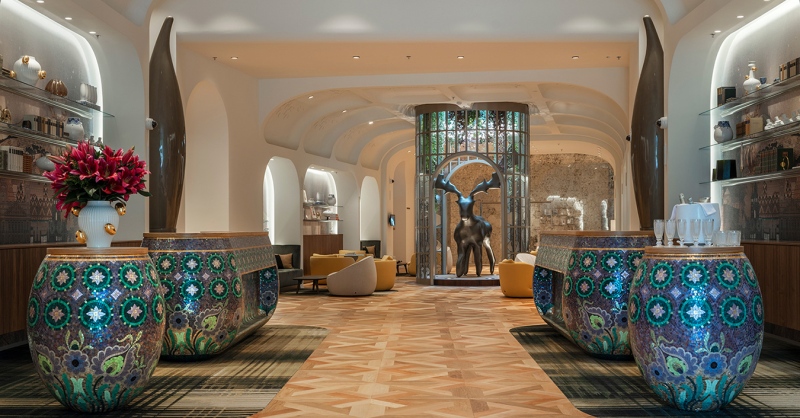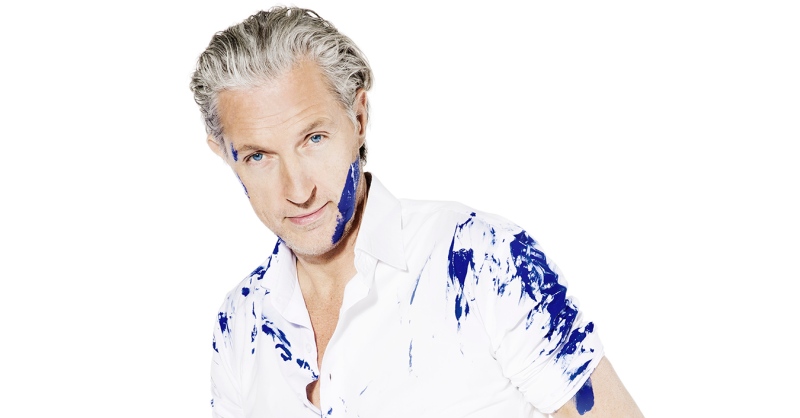Interview with Marcel Wanders, Kimpton BEM Budapest interior designer. The article originally appeared in the Octogon Magazine 'Kimpton BEM Budapest' special issue.
Few people may know that the design of the Kimpton BEM Budapest, the legendary Marcel Wanders' first work in Eastern Europe, was made possible thanks to a personal relationship with the investor. We asked the star designer about Budapest, the "Hungarian energy," the challenges of design, and the role a hotel should play beyond its function.
It was a Hungarian commission that asked him to be the first in the region to participate in a hotel design project. Seeing the result, we regret to learn of his decision to no longer undertake interior design.
Many people know the studio for its hotel work, and it is perhaps surprising that we have not worked on a similar challenge in the region. But the truth is that we have designed a total of 7 or 8 hotels, which may not sound like a lot at first glance, in almost three decades of operation. We have invested a lot of time in these projects, which has made them successful, and our hotels are now can be seen as a brand. So I think the low volume means that our work is not only new in this region, but I am very happy that I have finally been able to dream up a magical world in Budapest.
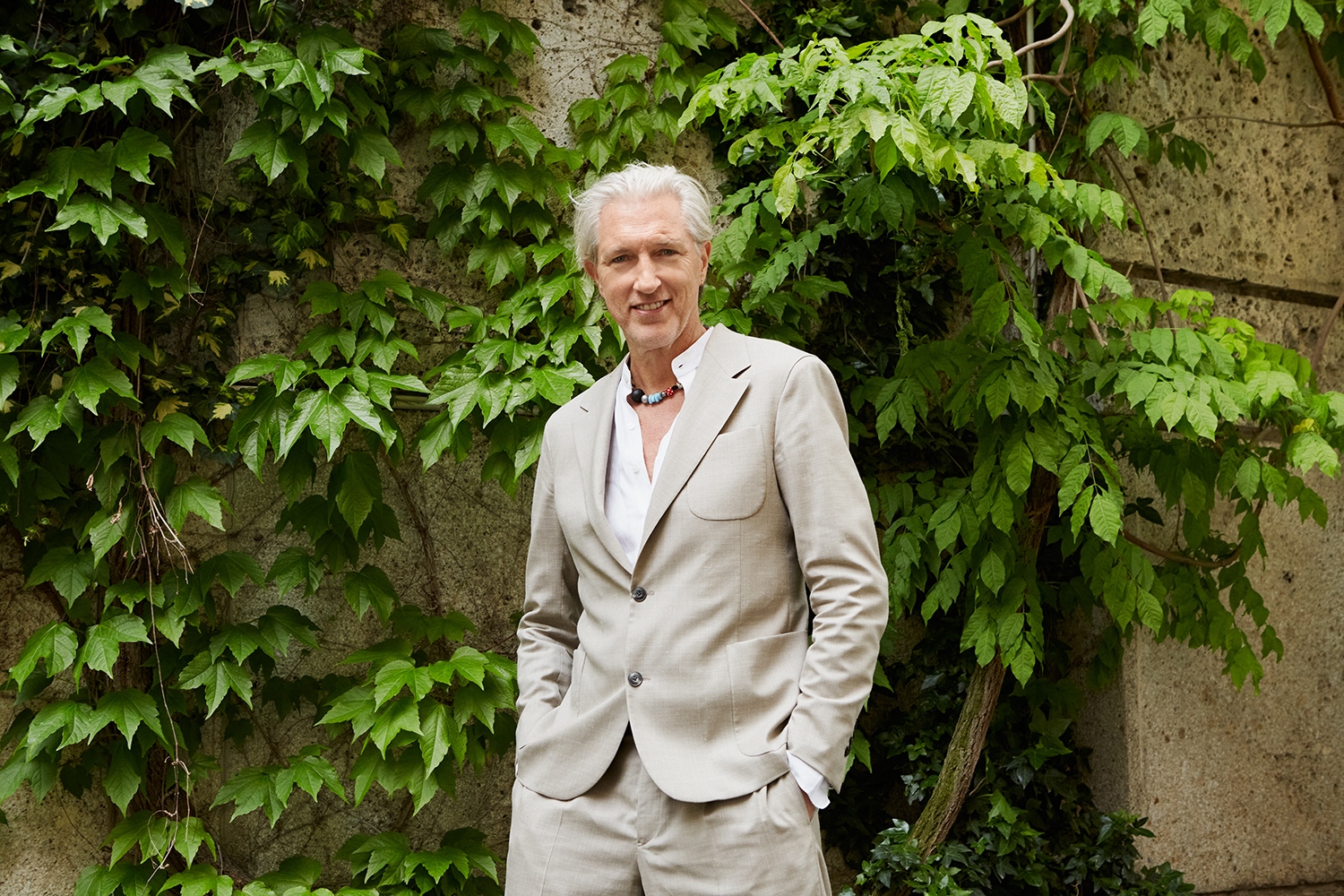
And why? How did the commission come about?
I've been to Budapest many times, for example during the Budapest Design Week, I've participated in juries, but I've also created an award for students at the Moholy-Nagy University of Art and Design. Every time I’ve been to here, the locals convinced me it was time to start something here. I already knew that the client was one of the most influential people not only in Budapest, but in Hungary. We met several times, talked a lot and even discussed working together a few years ago. We have known each other for a long time, and I was very happy when they approached me with the idea of this particular hotel. We knew that in the long run we could create something beautiful together with a reliable client - and one who is like us.
What was different about a project like this in Budapest? How do you start the design process in a new place?
Wherever I am, whether in Budapest or elsewhere, I try to be 'present' first and foremost. I remember once walking through Amsterdam with my daughter - maybe six years old. We were admiring the beauty of the city and I'll never forget we stopped on a bridge over the canal and I said to her, "Listen! Stop, look around! Isn't it wonderful what we're looking at? Look at the houses, look at the surface of the water, look at the lights, look at the people! Everything is so organized - and we are not doing anything, we are just walking around. We are just born here, we live here, we have nothing to do with it. I was born in Amsterdam and I always wanted to give something back to the city. Every time I've been to Budapest, I've had a lot of feelings that I've only experienced because of this place. This time I want to give something back to the city.
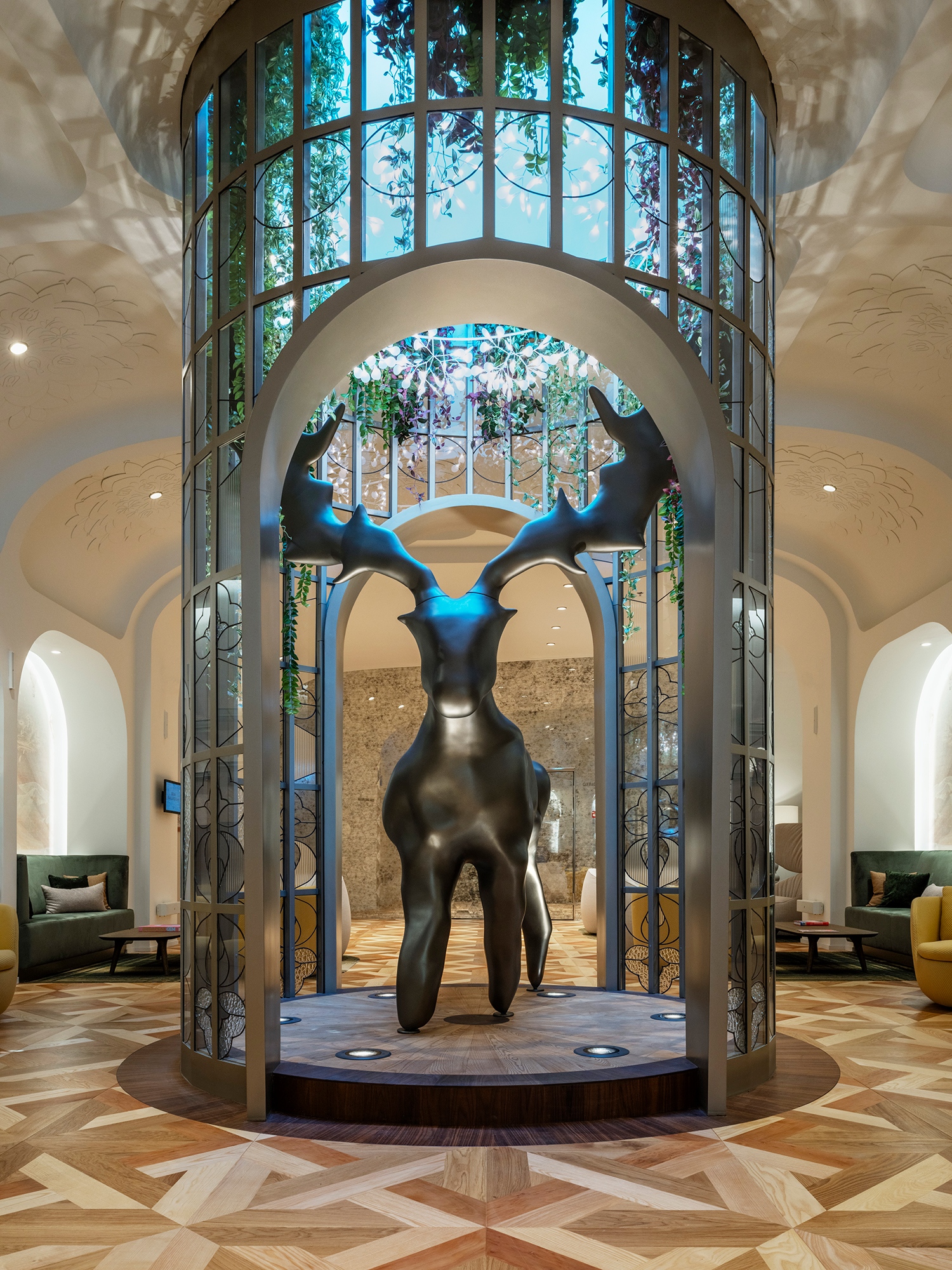
The original building, the Radetzky Barracks, was once the scene of many sad stories and controversies in Budapest. What was your impression when you saw it for the first time?
I think it's a beautiful place, the whole space has a fantastic quality, with the statue of József Bem in the middle. For me, Hungary has always had a sad and suffering atmosphere. In preparation for this work, we read a lot of works by famous Hungarian poets, but you only have to think of the country's national anthem. The acceptance of suffering is somehow part of the culture of this beautiful country, and it radiates from many of its buildings. This hotel, this building, will keep its doors open to people from other nations for whom the present matters. This building will not be a place of sad history, but a palace of beauty.
The romanticism of certain motives and symbols prevails in the hotel projects of the studio. What was the inspiration behind the interior design of Kimpton BEM Budapest?
We like to build on contradictions. Why do I say that? A five-star hotel is a place where people from many countries come, and everyone should feel welcome. So you have to create an international place, but it is a paradox that the environment also has to be local. When you wake up here, you don't want to feel like you're in New York or Barcelona, you want to feel like you're in Budapest.
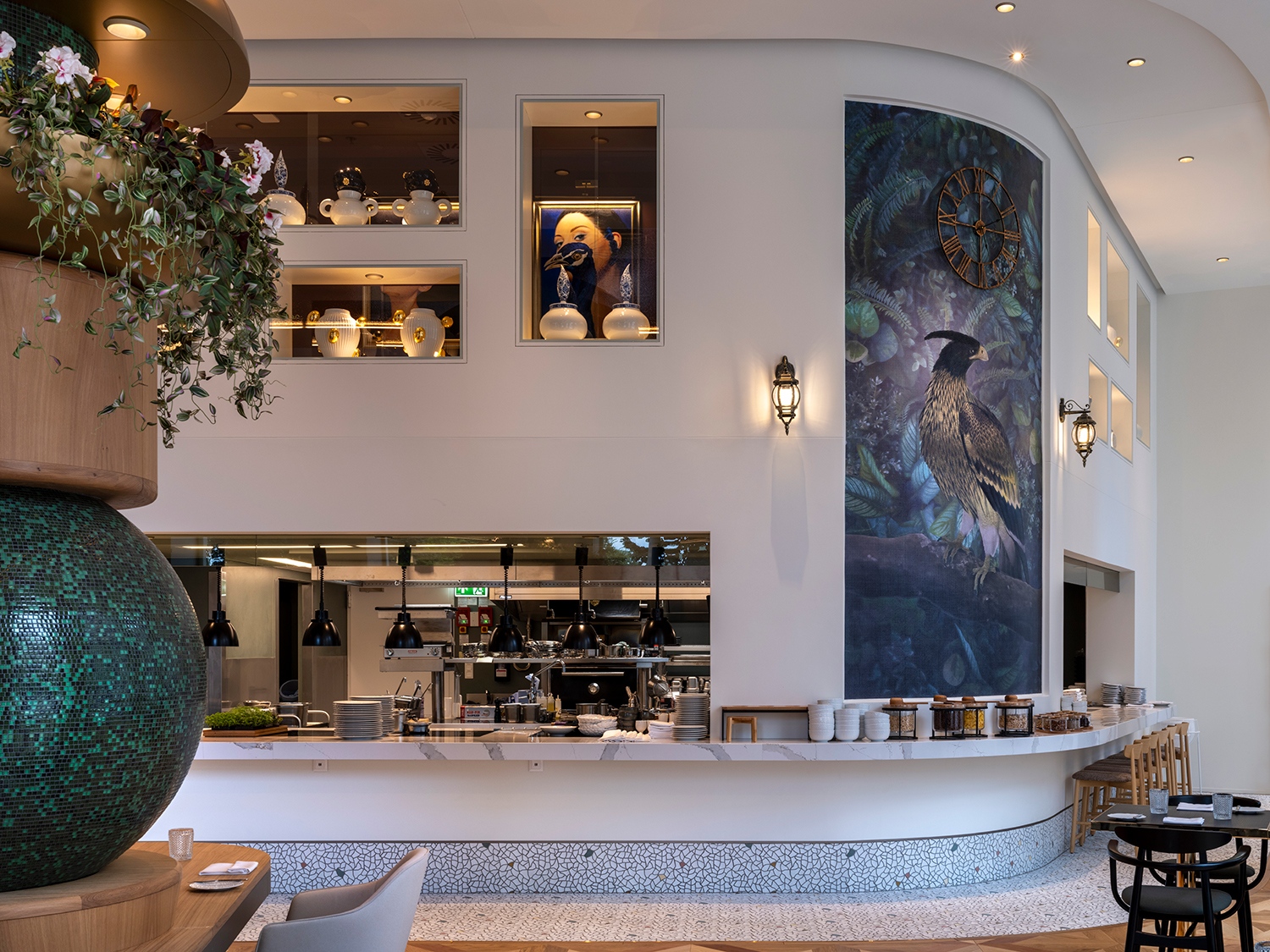
The other paradox is that we need to see something new and surprising. Something that enchants you. This may sound clichéd, but it is not so easy to design it without using clichéd symbols, colors and banal solutions. We had to immerse ourselves in the culture, talk to Hungarians and, as I said, start reading Hungarian poets. We felt the Hungarian energy. We also found typical symbols, but we were not allowed to use them. We also found typical colors, but we could not use them directly. You have to find ways to use the values you find in a new and surprising vision. We read the local mythological stories, which even the locals sometimes forget, but they are still deep in the collective memory. It is dangerous to play with them because they can become exaggerated and even comical. But we cannot go the other way either, we do not want to be too sacral, too pious. We want to entertain and celebrate with different stories. Those are the contrasts we worked with.
How do you see the function itself? Why should a hotel interior be so effective?
When you penetrate the culture of a country, the history of a place, you recognize different layers. Different colors, techniques, motifs, signs with feelings attached to them. These feelings include, for example, national consciousness or a sense of pride. All this comes together in a concept, but that doesn't mean I can only say it on a linear level. If you talk in the lounge, go to lunch in the restaurant, or spend time on the roof terrace, you will be greeted by different layers, different stories, beyond the function of the space. To give you an example, the hotel garden is there because it brings natural light into the core of the building and helps us breathe fresh air. I say it should also encourage us to explore and have mystical encounters. Nor can we think of the whole hotel only in terms of functionality. Yes, it is about having a place to stay in another country. There are obligatory elements for this - such as the lobby, the restaurant, the sky bar, in addition to the rooms - but they are created with a dazzling twist in addition to the classic architecture. We designed Kimpton BEM Budapest to be a design success. To make people want to travel to Budapest just for the experience.
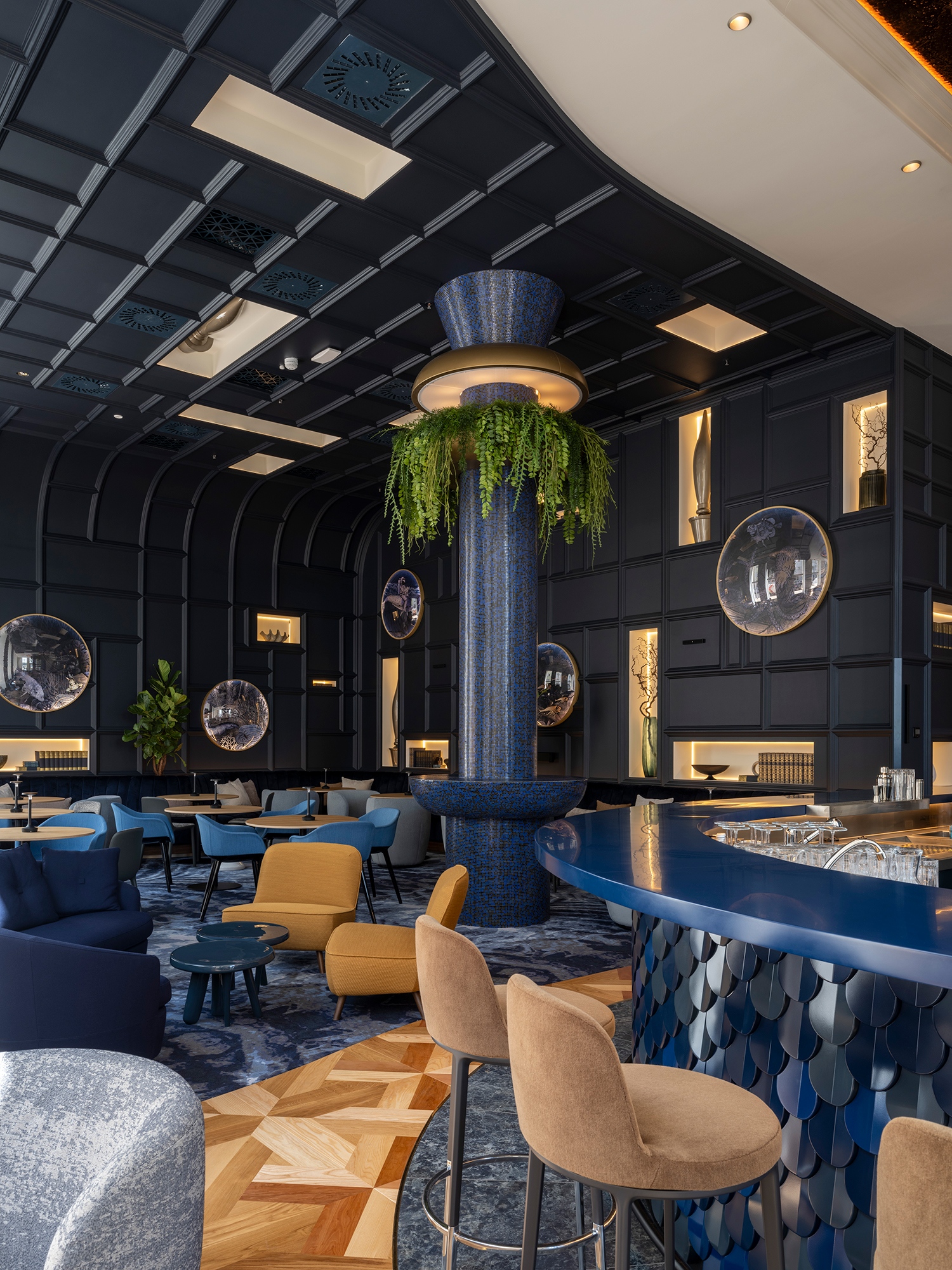
You mentioned layers: are there specific, recognizable motifs or styles from Budapest?
Yes, there are details that remind you of specific things, you can see Hungarian Art Nouveau motifs for example, but we don't copy anything, we mix it with different forms, different characters. The main characters will be, for example, the miraculous deer and the market, with which we can have a lot of dialog in the interior. It was a little bit about making people come in and be shocked. What's going on here? What are we looking at? We didn't want to bore you with one story - we're going to use a lot of motifs. I can't bore you with one story. But it's always important in design to know what the viewer will see the first time. What they will notice the second time, the third time, and so on. The order of a room is terribly important. If you don't build the visual, you can't read the interior. If you can't read the interior, you can't own the space. It's an uncomfortable and bad feeling, whereas a hotel room can be just what you need to avoid stress. Spaces that are readable in your head give you confidence, and this can develop that function, but beyond that you create human experiences, poetic spaces.
What is your advice to people who are guests in the hotel, how to understand or comprehend it?
I designed a hotel interior where contemporary video art was everywhere, even on the chandeliers [that was Andaz Amsterdam Prinsengracht - ed]. In the hotel, people could stop at any time and spend two minutes immersed in a work. Some people had a walk around the whole building just for the sake of the videos. It's so fantastic, really. We're all so busy running around. I wish everyone who is here would stop for a while, take in the sights, the stories, the textures. Soak in, even if it's just while you're waiting for the elevator.
Ha tetszett a cikk, és szeretnél előfizetni magazinunkra, itt teheted meg.


